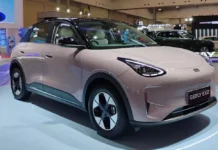In an effort to green its public transport network, Hanoi is aiming to replace 100% of its diesel-run buses with electric buses.
Recently, the Hanoi People’s Council approved a project to develop public transport using electric buses and green energy. Accordingly, all new buses from 2025 will be green energy vehicles; from 2030, a minimum of 50% of vehicles will use electricity and green energy, and 100% of new taxis will be electric or green energy vehicles. By 2050, all buses and taxis are expected to be electric or green energy-powered.
Based on this goal, the Hanoi Department of Transportation has proposed three plans to achieve the target of 100% of the city’s buses being convertible to electric buses by 2040:
– Plan 1: 100% electric buses, equivalent to 2,433 buses after the transition
– Plan 2: 70% electric buses and 30% LNG (liquefied natural gas) or CNG (compressed natural gas) buses, equivalent to 2,212 buses after the transition (including 1,592 electric buses and 620 LNG/CNG buses)
– Plan 3: 50% electric buses and 50% LNG/CNG buses, equivalent to 2,076 buses after the transition (including 1,100 electric buses and 976 LNG/CNG buses)
Based on the assessment of the actual situation, the city is proposing to implement Plan 3, then switch to Plan 2 when conditions permit, and after 2040, implement Plan 1.
For now, the city aims to convert buses within the central urban area (within the 4th ring road) to electric power. New bus routes will prioritize the use of electric and green energy vehicles. In addition, all diesel-run buses that have reached the end of their depreciation period will be replaced.
For buses with a depreciation period of less than 10 years from the date of manufacture, they will be used until the end of their depreciation period before being replaced with green buses.
Currently, Hanoi allocates about VND 2,300 billion annually from its budget to subsidize bus fares. To implement the plan to convert vehicles to the use of electric and green energy, Hanoi needs to arrange an additional VND 8,300 billion for the period of 2024-2033, equivalent to VND 831 billion per year.
In addition, the city is also preparing plans for the development of supporting infrastructure for green energy buses. Currently, the system of charging stations dedicated to electric buses in Hanoi has only 2 stations, all located at Vinbus’ position, serving the unit’s vehicles. Vinbus’ stations have 32 and 39 pillars, respectively, with a capacity of 120 kWh to 150 kWh, provided by StarCharge.
Vinbus’ electric buses have a maximum capacity of 67 seats (28 seats and 39 handles for standing passengers). This model can travel up to 260 km on a single charge, with a charging time of about 2 hours.
Thai Son (Tuoitrethudo)

























_result.jpg)
_result.jpg)


![[CAR REVIEW] Weekend Getaway with Toyota Wigo: Small, Cute, and Packed with Power](https://vnauto.net/wp-content/uploads/2023/11/xehay-toyotawigo-02082023-11-150x150.jpg)












